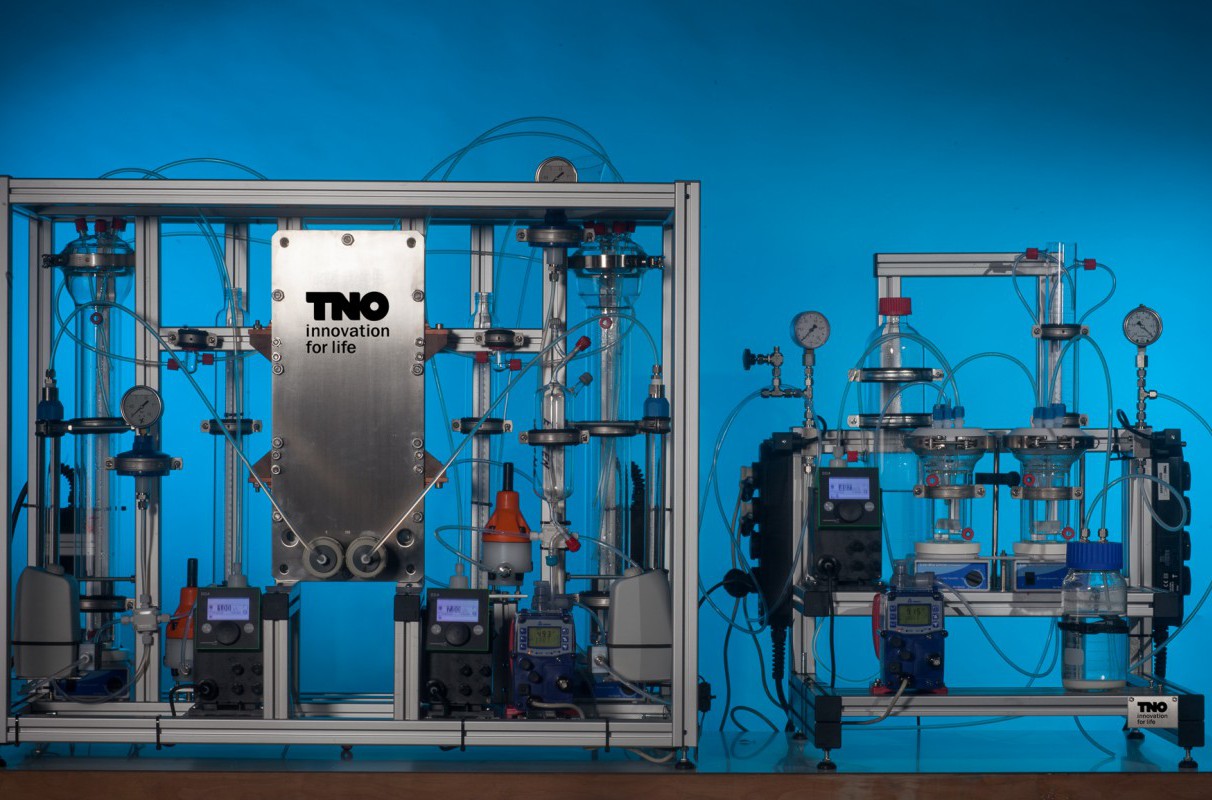

Promising results in electrochemical production of Lactic Acid
06-03-2018 | Project results | P2Chemicals
 Electrochemical oxidation towards high-value chemical products is one of the most interesting and promising applications of electrosynthesis on short term. Researchers from Shared Innovation Program VoltaChem have recently demonstrated very high yields for the oxidation of propylene glycol (PDO) to lactic acid (LA) using cheap electrodes and chemicals. With the results in hand, the next step can be made towards optimization for better business cases.
Electrochemical oxidation towards high-value chemical products is one of the most interesting and promising applications of electrosynthesis on short term. Researchers from Shared Innovation Program VoltaChem have recently demonstrated very high yields for the oxidation of propylene glycol (PDO) to lactic acid (LA) using cheap electrodes and chemicals. With the results in hand, the next step can be made towards optimization for better business cases.
As discussed earlier in the VoltaChem whitepaper 'Empowering the chemical industry - opportunities for electrification', direct electrochemical conversion of feedstock to chemicals is one of the primary routes for electrification of the chemical industry. Although commodity scale implementation of this technology cannot be expected within the coming years, there are already positive business cases to be expected on the short term in the production of high-value chemicals, mainly due to the high selectivity and scalability of electrosynthesis. Therefore, VoltaChem co-initiator TNO has focused a large part of its research within VoltaChem on selective oxidations using electrochemical technology.
Electrochemical conversion of PDO to LA using graphite electrodes
Earlier research in 2015 focused on high-value electrochemical oxidation of biobased 5-hydroxymethylfurfural (HMF) to furan dicarboxylic acid (FDCA), a key intermediate for bio-based plastics. Already back then, it was identified that the conversion from Propylene Glycol (PDO) to Lactic Acid (LA) could be a good alternative for the electrochemical production of plastic intermediates, due to the fact that PDO is manufactured from biobased feedstock and LA can be polymerized easily.
Therefore, the electrochemical conversion of PDO to LA was examined in 2017, and successfully. LA is traditionally formed by the bacterial fermentation of starch and sugars or, but in far fewer quantities, by chemical synthesis from acetaldehyde. It is mainly used as a raw material for PLA-polymers or as a high-value chemical in pharmaceutical and cosmetic applications. Robert Nijhuis, Business Development Manager for VoltaChem/TNO explains: “producing Lactic Acid via an electrochemical route has big advantages relative to the traditional production methods: the reaction is more controlled and Lactic Acid is easier to recover”. Nijhuis continues: “In general, electrodes with noble metals are used for the electrochemical conversion, an expensive solution. We used a combination of the commonly available TEMPO mediator with graphite electrodes: this is a much cheaper solution. In our research, we obtained similar results as with expensive electrodes. Furthermore, we found out that the increasing availability of renewable energy could drastically improve the business case.”
From lab to continuous production
Last year, the electrosynthesis research on LA has been focused on showing the proof-of-principle of the idea in batch production. Roman Latsuzbaia, scientist electrochemistry at VoltaChem/TNO, explains: “PDO seems to be ideal to convert to Lactic Acid as it can be made cheaply and abundantly out of glycerol, which is a byproduct from the production of biodiesel. That’s why we focused on PDO. At the start of the project, we investigated mechanisms of conversion. From that, we’ve done testing leading to optimized conversion conditions allowing yield up to more than 90% with very good selectivity’s. These results are in line with other electrochemical conversions using more expensive materials”. Robert Nijhuis continues: “The conversion takes place at a pH of 9 instead of 12. This is better because cheaper materials can be used closer to neutral conditions and less acid is needed for further processing”.
Next steps
Based on these laboratory results, upscaling to continuous conversion in a larger scale electrolyzer is the next step. Such a system was already built for a continuous production of FDCA, containing both the electrochemical reactor and downstream processing units. “We can use this reactor for the next step to bring this promising approach closer to the level of industrial use” Latzusbaia explains. “The installation to be used contains a reactor with modular electrodes, which means that the electrodes can be replaced depending on the requirements for any electrochemical reaction. We used it for the production of FDCA, and we can use it now for the production of LA. We are really excited to bring this technology further in 2018 and accelerate market implementation towards a more sustainable production”.
More information
Any company that is interested to find out more about electrosynthesis of Lactic Acid or electrosynthesis, in general, is welcome to discuss the technical and business opportunities for their specific chemical conversion. We are more than happy to help with our know-how, network, and R&D infrastructure.
Interested? Please contact Robert Nijhuis
Share this page: